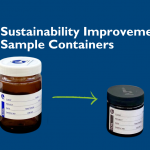
Aggregate & Rock Testing at Normec i2 Analytical
The use of aggregates in construction has been prominent since the Egyptians built the Pyramids. Its use in the manufacturing of Concrete, Asphalt and Road Construction makes it one of the leading players in construction. Aggregates can be derived from two main sources, Primary and Secondary.
Primary Source Aggregate indicates that the materials are naturally occurring deposits which have been excavated and processed for the use in construction and that this is their first use. Such materials can be Limestone, Granite, Alluvial Sands & Gravels, and Sand.
Secondary Source Aggregates will indicate a material not being used for the first time and derived from recycled sources such as Crushed Concrete, Crushed Brick, Glass, Bituminous Road Planning’s, Ground Granulated Blast-furnace Slag (GGBS) and Pulverised Fuel Ash (PFA).
In both cases, thorough and stringent laboratory tests are carried out for a variety of performance and Quality Control criteria. Testing can include physical, mechanical and chemical properties, all ensuring that aggregates comply with the required specification and more importantly, will be fit for purpose and thus reducing risk through the length of the contract and beyond.
At Normec i2 Analytical Limited we have the facilities and technical expertise to provide a comprehensive testing service to all aspects of construction design and implementation use of Aggregates.
Our UKAS accredited laboratory can carry out testing to British and European Standards including the following:
| Test | Standard | UKAS Accredited Test |
|---|---|---|
| Water Content | BS EN 1097-5-2008 | Yes |
| Grading Analysis - Wet | BS EN 933-1-2012 | Yes |
| Grading Analysis - Dry | BS EN 933-1-2012 | Yes |
| Constituent Parts | BS EN 933-11-2009 | Yes |
| Flakiness Index | BS EN 933-3-2012 | Yes |
| Shape Index | BS EN 933-4-2008 | Yes |
| Crushed & Broken Surfaces | BS EN 933-5-2022 | Yes |
| Micro Deval | BS EN 1097-1-2011 | Yes |
| Los Angeles Coefficient | BS EN 1097-2-2020 | Yes |
| Water Absorption & Particle Density (particles 31.5mm to 63mm) | BS EN 1097-6-2022 | Yes |
| Water Absorption & Particle Density (particles 4mm to 31.5mm) | BS EN 1097-6-2022 | Yes |
| Water Absorption & Particle Density (particles 0.063 to 4mm) | BS EN 1097-6-2022 | Yes |
| Loose Bulk Density & Voids | BS EN 1097-3-1998 | Yes |
| Magnesium Sulphate Soundness Value | BS EN 1367-2-2009 | Yes |
| Laboratory Reference Density | BS EN 13826-2021 | Yes |
| Aggregate Crushing Value | BS 812-111-990 | No |
| Ten Percent Fines Value | BS 812-110-1990 | No |
| Frost Heave | BS 812-124-2009 | Yes |
| Point load | ISRM | Yes |
| Uniaxial Compressive Strength (UCS) | ISRM | Yes |
| Slake Durability | ISRM | None |
| Water Content | ISRM | Yes |





